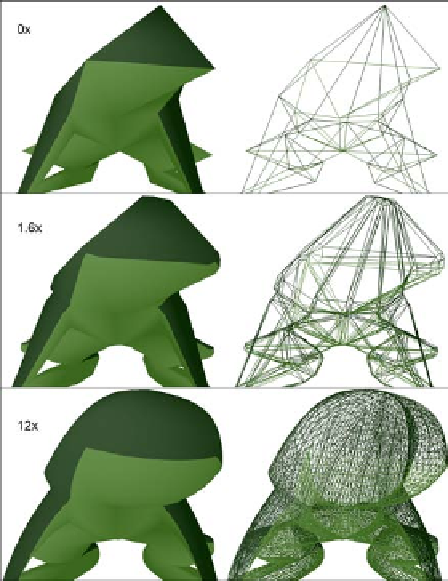Graphics Reference
In-Depth Information
The character mesh is already fairly smooth, so in order to see a more dramatic result,
the completed example includes a very low polygon frog character with only 60 triangles.
The following screenshot shows the frog rendered at varying tessellation levels:
Low-poly frog (60 triangles) with no tessellation (top), Phong tessellation and fractional odd partitioning
with tessellation factor of 1.6 (middle) and 12.0 (bottom). Original model by kednar @ blendswap.com
Reviewing the impact of Phong tessellation for the preceding screenshots of the character
and frog highlights the following issues:
F
The number of primitives increases quite significantly and it will be necessary to cull
some primitives or use an adaptive Level-of-Detail to prevent performance issues.
F
Although the model does not need to be authored with tessellation in mind, it is still
beneficial if it has been. For example, to maintain a crease or hard edge in some
instances, it will now be necessary to include additional primitives to ensure that the
Phong tessellation process does not curve them off too much, as we saw happening
to the preceding frog mesh.
F
Unless there are additional details to be incorporated (for example, displacement
mapping), the benefits of Phong tessellation only lie with the smoother contours
and silhouettes (which is its purpose in the first place). Therefore, to improve the
performance, we may only need to tessellate the contours.



